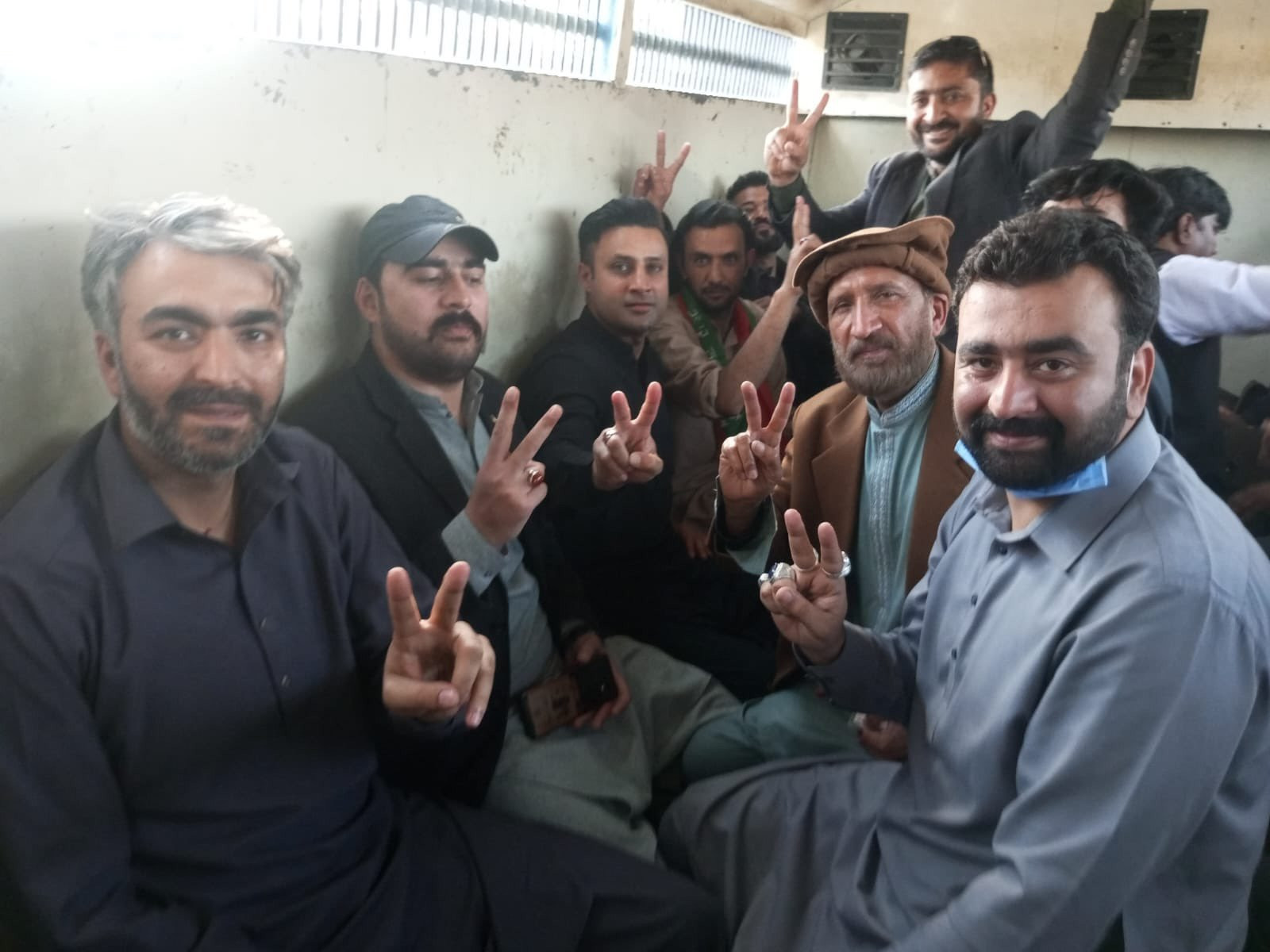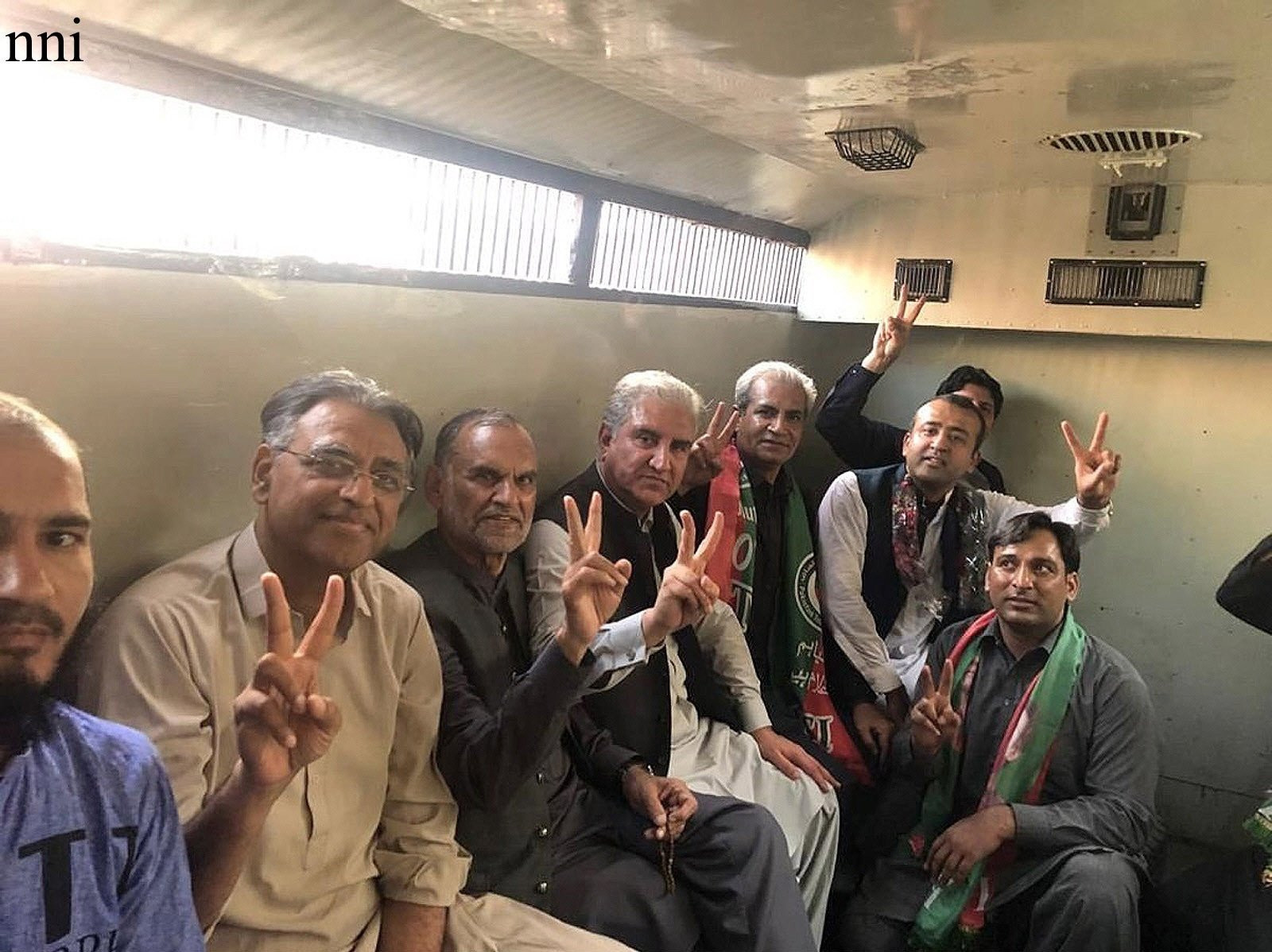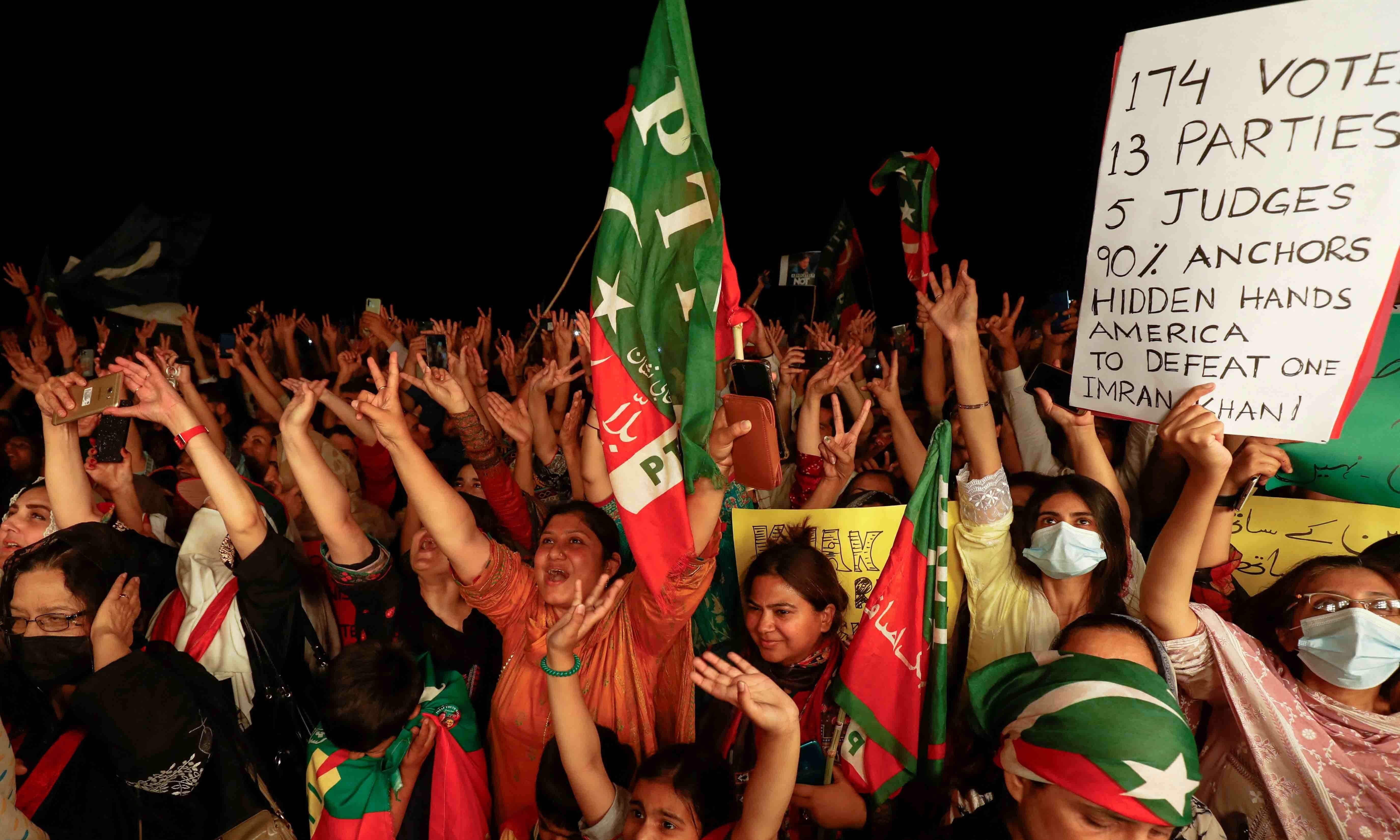“Let us not fear going to jail. If the officials threaten to arrest us for standing up for our rights, we must answer by saying that we are willing and prepared to fill up the jails of the South.”
—Martin Luther King Jr. at the White Rock Baptist Church in Durham, North Carolina, February 16, 1960
“I am announcing, God willing, my ‘Jail Bharo Tehreek’ from Wednesday. I am telling my entire party today to prepare. They are scaring us with jails [but] we will fill them all. They will not have any space left in their jails.”
—Imran Khan, at his residence in Zaman Park, Lahore, Punjab, February 22, 2023
Is it a mere coincidence or the almost-similar date a brilliant inspiration from history or simply a stark realization that human beings, beyond religious, ideological, and national divides, are identical in their struggle to be heard, to matter, to be given their fundamental rights in some places and their constitutional rights in others?
Imran Khan is not Martin Luther King Jr, a Baptist minister and “America’s pre-eminent advocate of nonviolence and one of the greatest nonviolent leaders in world history.” Imran Khan is a politician whose fight for relevance may have started with a personal reason but who today, on February 24, 2023, is seen as the sole national leader who is the voice of the aspirations of millions of a country whose political history is shaped by three words: chaos, uncertainty, fear.
What is happening in Pakistan? The answer is simple yet complex. Sab ko maloom hai phir bhi na-maloom hai.
On February 22, 2023, Khan tweeted: “Today we start our Jail Bharo campaign for Haqeeqi Azadi for 2 main reasons. One, it is a peaceful, nonviolent protest against the attack on our constitutionally guaranteed fundamental rights. We are facing sham FIRs & NAB cases, custodial torture, attacks on journalists & social media ppl. Two, it is against the economic meltdown brought on by cabal of crooks who have money laundered billions in looted wealth & gotten NROs for themselves while crushing the ppl, esp the poor & middle class, under the burden of spiraling inflation & rising unemployment.”
The Jail Bharo Tehreek started at Lahore’s Mall Road where a large assembly of Pakistan Tehreek-e-Insaf (PTI) workers, led by the party’s Vice-Chairperson Shah Mahmood Qureshi and General Secretary Asad Umar and other leaders, presented themselves for voluntary arrest. Reportedly, eighty-one workers were arrested. Although a media report claimed that PTI leaders “forced” themselves into police vans, the authorities of the Lahore Central Jail at Kot Lakhpat received the notification that the PTI workers were arrested “for the violation of Section 144 and damaging the police van.”

The Express Tribune reported: “The PTI claimed that those who courted arrest in Lahore included Shah Mahmood Qureshi, Asad Umar, Umar Sarfraz Cheema, Azam Swati, Muhammad Madni, Murad Raas, Ihsan Dogar, Siddique Khan, Azam Niazi, Abdul Wakeel, Shadi Khan, Gulfarm Virk, Muhammad Rehman, Hamed Ullah Khan, Mian Shahzad, Noran Sohail, Rana Manan, Chaudhry Zahid, Malik Sajid Prince, Ahmad Bhatti, Shahzad Khokhar and Azhar Bhatti, among party’s other central and provincial leaders and activists.”
Punjab jails, like the rest of Pakistan’s jails, are notoriously overcrowded, and Khan’s proclamation of jail bharo, if followed literally, could turn into a logistical nightmare for the caretaker government and prison authorities. Instead of comprehending the political symbolism of the movement, the PDM government seems to have jumped in glee at the opportunity of further pushing PTI leadership to the wall, and in this case, into cramped jail cells. As per the latest reports, Shah Mahmood Qureshi is in a jail in Attock, Asad Umar in Rajanpur, Omar Sarfaraz Cheema in Bhakkar, Azam Swati in Rahimyar Khan, Mohammad Khan Madni in Bahawalpur, and Murad Raas in Dera Ghazi Khan.
In a system that has two parallel mechanisms for the haves and the have-nots, I wonder about the conditions in which the PTI workers are being kept in various overloaded jails under authorities known for their inhuman treatment of inmates from underprivileged backgrounds.
In the next phase of the Jail Bharo Tehreek in Khyber Pakhtunkhwa the PTI KP President Pervez Khattak, former governor Shah Farman, former Speaker Asad Qaisar, former minister Taimur Jhagra, former MPA Kamran Bangash, and other leaders and workers assembled for voluntary arrests. The KP police, reportedly, refused to arrest anyone.

What is happening in Pakistan? The answer is not blowin’ in the wind.
On February 20, 2023, the Lahore High Court re-awarded a protective bail to Khan “in a case related to PTI protestors’ alleged rioting and clashes with Islamabad police in October in the aftermath of his disqualification by the ECP in the Toshakhana reference.” Khan’s earlier non-presence at court was the pretext for his bail cancellation. His leg injury, due to gunshots during the assassination attempt on his life on November 3, 2022, and the very real threat to his life, were cited as the reasons for his non-appearance at court.
On that days for hours, Pakistan’s main news was Khan’s appearance in the court premises, flanked by hundreds of PTI workers and supporters and his slight limp when he went inside the courtroom. Thousands of PTI workers and supporters were outside the court and lining several miles of Lahore’s Mall Road.
Noticeable about this case on Khan is the fact that he was not present during the PTI protest in Islamabad in October.
On February 22, 2023, the honourable Chief Justice of Pakistan Umar Ata Bandial, taking suo motu notice of the delay in the announcement of elections in Punjab and Khyber Pakhtunkhwa, formed a nine-member bench for adjudication on the matter in which he stated there was an “apparent lack of clarity.”
On February 23, 2023, in a workers’ convention in Sargodha, Maryam Nawaz Sharif, Senior Vice President and Chief Organizer of Pakistan Muslim League-Nawaz (PML-N), unleashed a volley of allegations on Pakistan’s’ highest justiciary and former ISI director-general Faiz Hameed. Pointing at their photos on a large screen, Maryam stated, loud and furious, “A group of five people was involved in the conspiracy against Nawaz Sharif. This group of five is responsible for this plight of Pakistan. Its leader was Gen Faiz Hameed. Among them were Justice Mazahir Naqvi, Justice Ijazul Hassan, [former chief justice] Saqib Nisar and [justice (retd)] Azmat Saeed.”
What is happening in Pakistan? It will take me a lifetime, whatever is left of it, to make sense of what’s ailing my beloved homeland.

My lifelong interest in politics stems from my mother’s political views. As a child, I watched my mother watching Zulfiqar Ali Bhutto’s speeches on her black and white TV. I remember the fireworks in our village Kolo Tarar on my maternal uncle’s victory on a Pakistan People’s Party (PPP) ticket in 1977. The pain on my mother’ face on reading the news of Bhutto’s hanging on April 5, 1979 is a distant but a real memory. General Zia-ul-Haq became the representation of a dark Pakistan. Tribulations of the Bhutto family were part of my teens and twenties. Shahnawaz Bhutto’s death traumatized the then seventeen-year-old me. That joyous April 1986 day is etched in my mind as one of the most important days in the history of Pakistan—Benazir Bhutto’s return to Pakistan after years of exile. Her welcome crowd in Lahore is said to be the largest in the history of Pakistan.
So much happened in the next few years. Zia dying in a plane explosion; announcement of first elections in eleven years; in 1988, thirty-five-year-old Benazir becoming the first female prime minister of Pakistan and a Muslim country; formation of Islamic Jamhoori Ittehad (IJI) in 1988 as a bulwark against Benazir’s popularity; President Ghulam Ishaq Khan invoking the Eighth Amendment to the Constitution of Pakistan for dismissal of Benazir’s government on the charges of “rampant corruption and misgovernance”; IJI’s Nawaz Sharif’s first government in 1990; President Ghulam Ishaq, in 1993, invoking the Eighth Amendment for dismissal of Sharif’s government on the charges of “corruption and mismanagement of economy”; Supreme Court’s reinstatement of the Sharif government; new elections in 1993 and Benazir’s second government.
Imran Khan, Pakistan’s cricket legend and philanthropist, formed Pakistan Tehreek-e-Insaf, his movement for justice, on April 25, 1996.
Murtaza Bhutto, son of Zulfiqar Ali Bhutto and brother of Benazir Bhutto, was assassinated in Karachi on September 20, 1996. I remember his death deeply traumatised me. I still wonder who killed him. His widow and two children still await justice.
Pakistan’s game of thrones continued. Benazir’s second government’s dismissal through 58-2 (B) by President Farooq Ahmed Leghari, one of PPP stalwarts, on the charges of “corruption and a terrible law and order situation”; Sharif back in power after winning the 1996 elections; General Pervez Musharraf’s coup against Sharif in October 1999; Supreme Court’s validation of the coup on May 13, 2000; Sharifs’ exile to Saudi Arabia in December 2000; Musharraf’s self-declared presidency on June 20, 2000; general elections in 2002; Khan’s one seat in 2002 elections; Musharraf’s 2007 highly controversial National Reconciliation Ordinance; Musharraf’s November 3 imposition of emergency rule, arrests of thousands of opposition politicians and lawyers.
Ending her self-exile, Benazir returned to Pakistan in October 2007. On December 27, 2007, Benazir was assassinated. Pakistan went into a state of deep shock and grief. I cried for days; I still miss her presence in Pakistan’s politics. Her family still awaits justice.
PPP’s victory in general elections in 2008; PTI’s boycott of elections; Asif Zardari, husband of late Benazir, the new president of Pakistan, and Yousaf Raza Gillani prime minister; PML-N’s government in Punjab; 2009 Supreme Court’s disqualification of Nawaz and Shahbaz Sharif, the then Chief Minister of Punjab; President Zardari’s two-month governor rule in Punjab; Supreme Court’s dismissal of Prime Minister Gillani for contempt of court for “refusing to ask Swiss authorities to reopen corruption cases against President Zardari”; PML-N’s victory in 2013 elections, which the PPP and PTI dubbed as rigged; PTI’s formation of its first-ever government in Khyber Pakhtunkhwa; Sharif stepping down in 2017 from his third prime ministerial position after Supreme Court’s disqualification in a decision connected to a Panama Papers case.
Despite the 2006 Charter of Democracy signed by Benazir Bhutto and Nawaz Sharif, their political rivalry and pulling each down and jubilation at each other’s downfall never ended. Even Benazir’s very tragic assassination didn’t change that. PPP and PML-N never stopped being one another’s foe until the growing relevance of Imran Khan reshaped the rules of power in Pakistan.
They never accepted anyone’s but their birthright to the highest levels of power in Pakistan. Despite being victims of military coups, presidential ordinances and courts’ verdicts that ended their governments and disqualified and exiled their leaders, they continue to do politics that work on the principles of self-glorification and self-advancement.
Imran Khan’s victory in the 2018 elections and his prime ministership became the unifying unacceptable for PPP and PML-N. They dubbed him “selected”. They said in unison that no one voted for him.
Those who had acquired power as puppets of the Establishment, those who had hailed the 1999 coup against Sharif as the comeuppance he deserved, those who ranted against the Establishment’s ubiquitous interference in civilian matters, those who went hoarse for supremacy of vote, and those who blamed the Establishment for every ill in Pakistan united and formed Pakistan Democratic Movement with a single-point agenda: removal of Imran Khan. They did to Khan what had happened to them multiple times but without teaching them anything noble.
They, under the patronage and leadership of Those Who Shall Not Be Named, ousted Khan in the name of civilian supremacy. They camouflaged the coup as a vote of no-confidence. Pakistan’s collective déjà vu. Another elected prime minister was overthrown. Another elected government was overthrown. Reasons were cited. The superimposing of everything bad since 1970 on everything good Pakistan was trying to be in 2022.
There was just one thing they had not taken into consideration: the will of the people of Pakistan. Those millions of Pakistanis who voted for Khan in 2018 and were constantly dubbed as no-one-voted-for-Khan non-entity. Those who were appalled at the desecration of democracy. Those who didn’t like Khan but supported him after his ouster. Those who thought of him as a flawed but a committed-to-Pakistan leader. Those whose elders had hated what had happened to their leaders but didn’t protest. Those who became Khan’s strength when he left the prime minister office without any ally.
Those young and middle-aged and old who will not let what happened to many prime ministers happen to Khan: they will not let Those Who Shall Not Be Named, who believe in their invincibility, defeat Khan.
Those who believe in Khan’s dream of a glorious Pakistan.
Those who believe that supporting Imran Khan in his struggle will change Pakistan.
